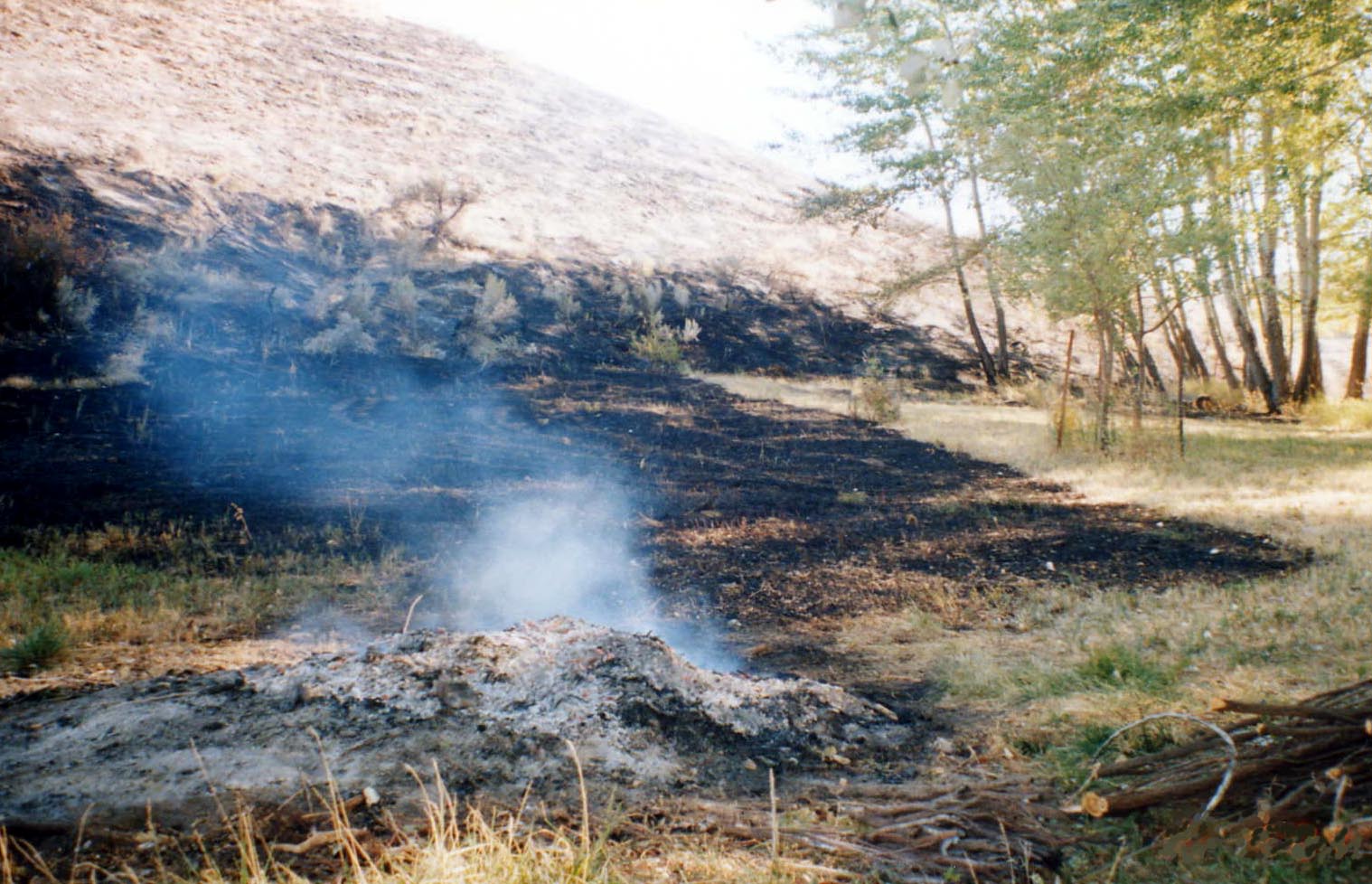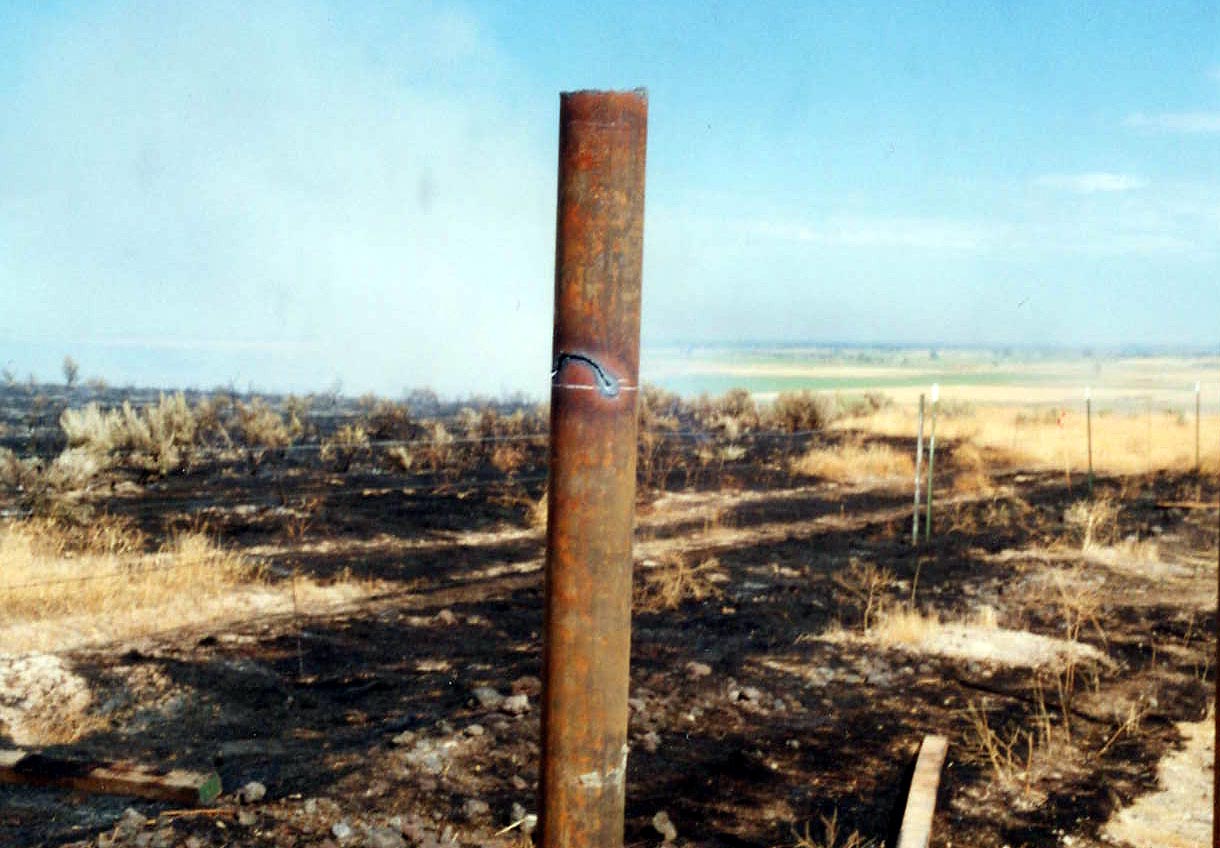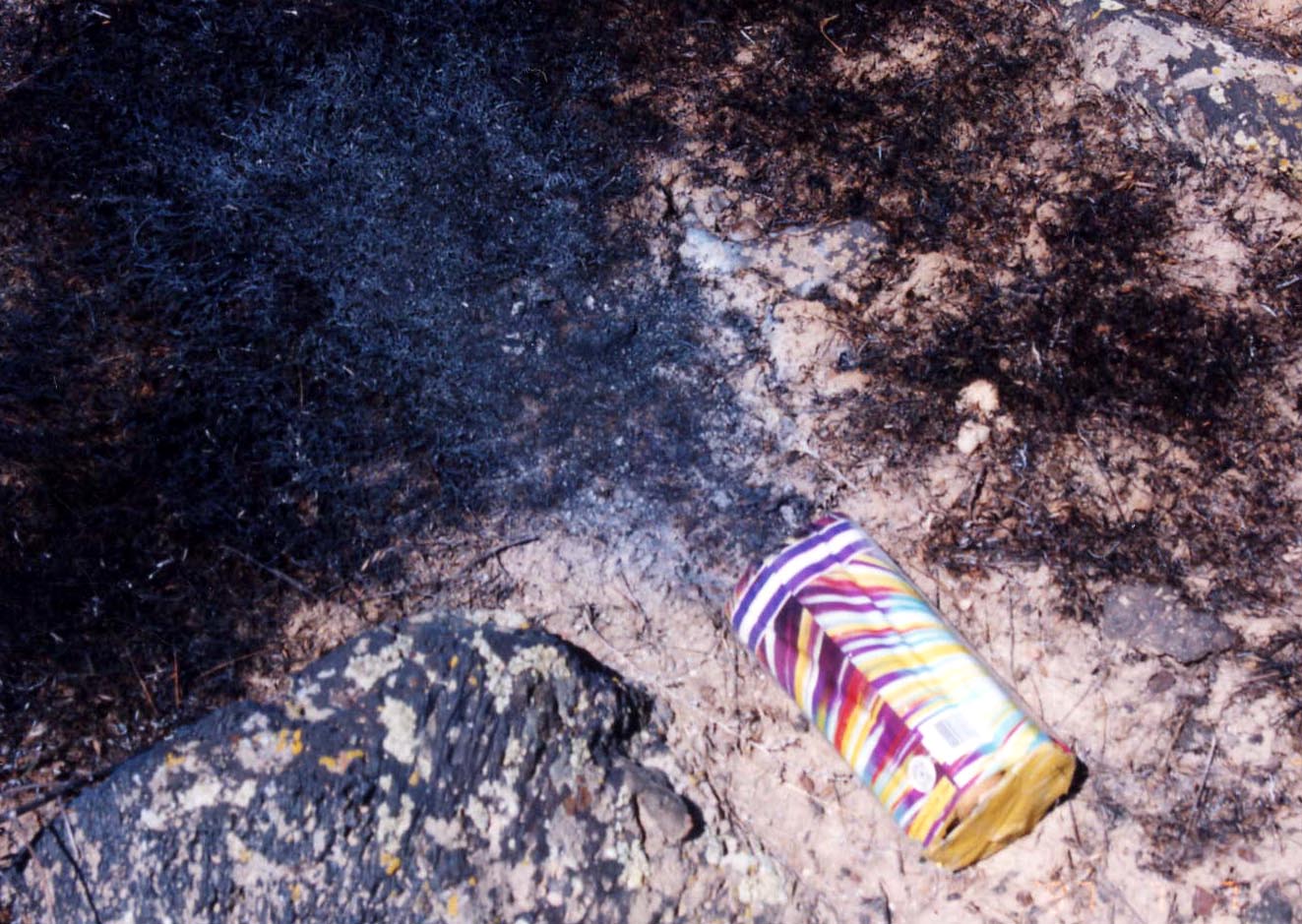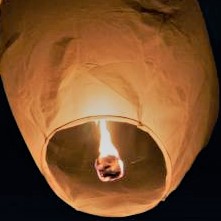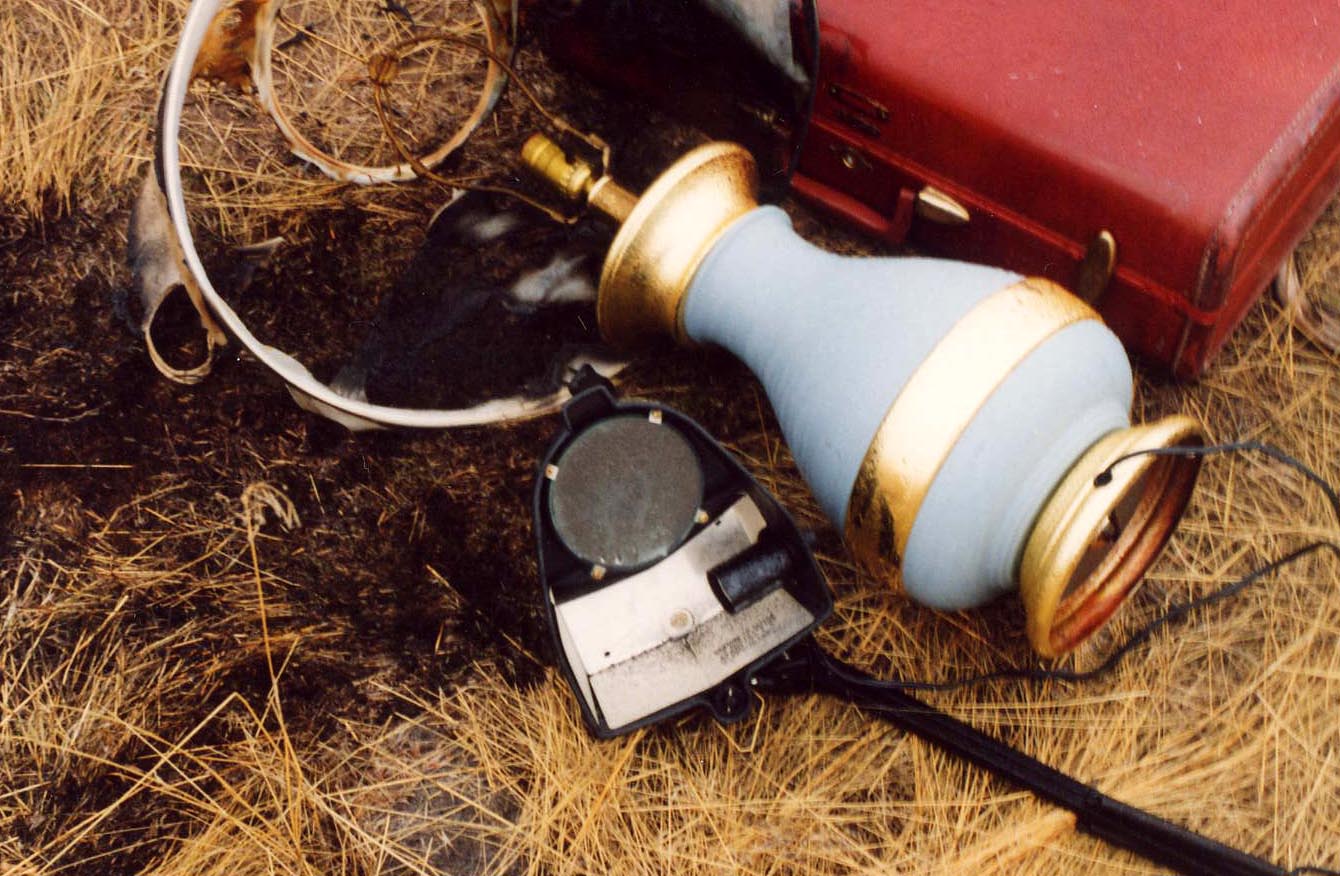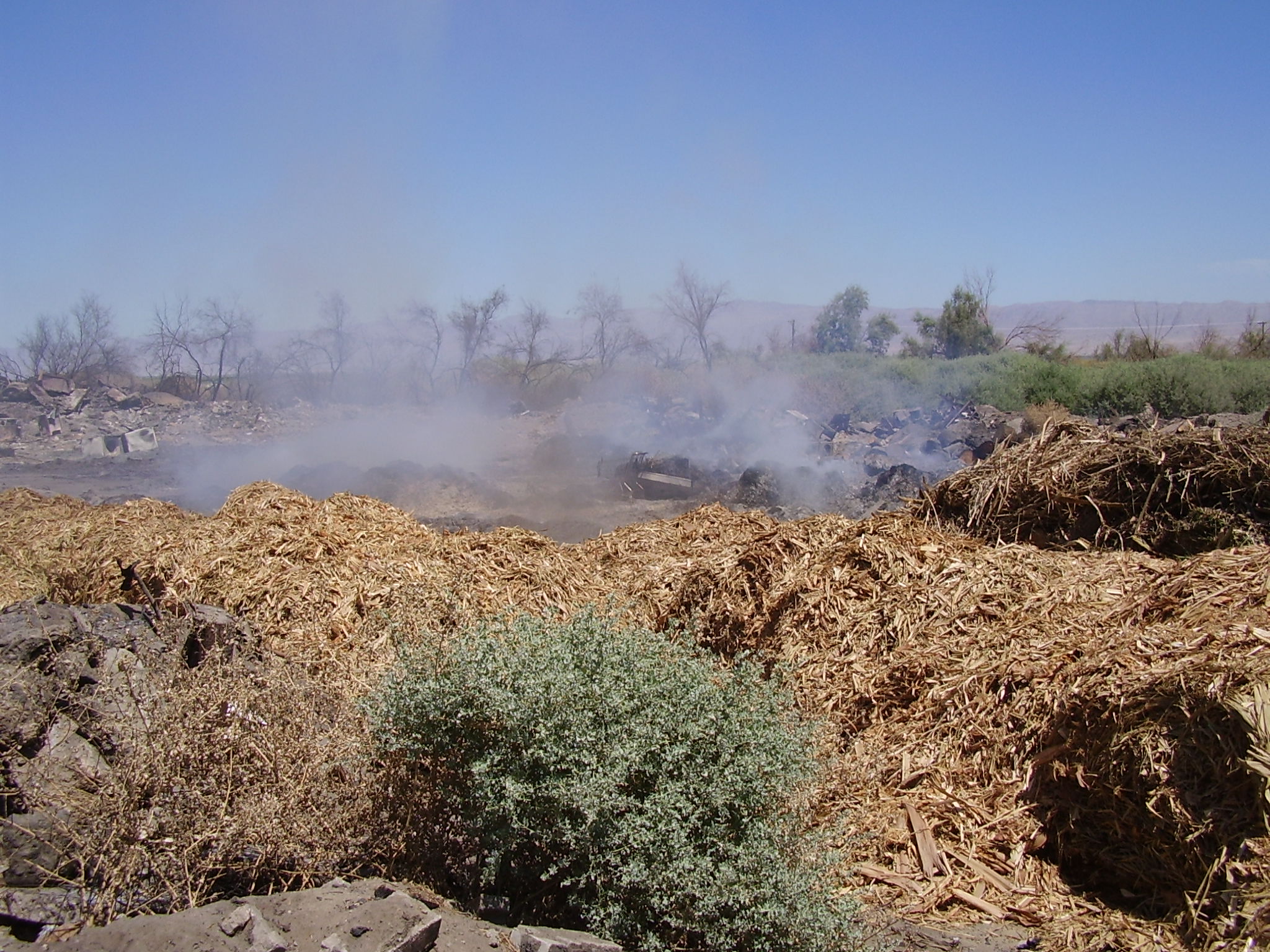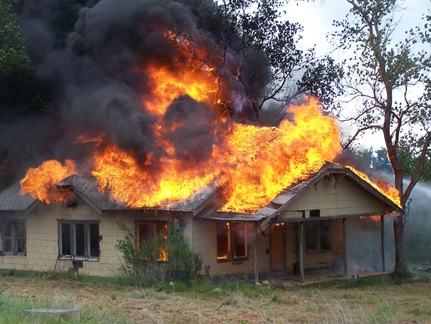Wildland fire investigation: common wildfire causes
Preventing fires requires knowing how they start. Agencies are mandated to investigate fires to determine the origin and cause. Fire cause determination helps prepare more effective fire prevention programs. By knowing what is causing fires we can implement educational campaigns and mitigation projects. If wildland fires have been intentionally, maliciously, or negligently caused we can pursue criminal or civil prosecution, and recovery costs associated with suppression and damages. This also allows agencies to prepare efficient pre-suppression strategic plans based on knowledge of causes and responsible persons.
Wildfires are caused by nature, generally lightning, or by human activity. As of 2023, the 10-year average of human-caused fires account for 88 percent of all wildfires nationally. Human-caused wildfires are classified for statistical purposes into general categories.
The general cause categories for wildfires were revised in 2020. Click on the category to learn more about the common human causes of wildfires and tips to prevent them (source NWCG Data Standards for Wildfire Cause and NWCG Guide to Wildland Fire and Origin Cause Determination, PMS 412, April 2016).
General human-caused fire categories:
Recreation and ceremony (includes campfires)
Other causes includes anything that can cause a spark that is not listed above and other causes that are not categorized, but not limited to, such as:
- Spontaneous combustion
- Electric fences
- Glass refraction - magnification
- Structures
All human-caused fires are preventable if proper care and attention is taken to prevent that ignition spark.
More information about wildland fire investigation and training can be found on the NWCG wildland fire investigation subcommittee website
Arson
Arson is the criminal act of deliberately or maliciously setting fire to property including public lands with the intent to damage or defraud. Devices and “hot sets” are commonly used to ignite fires.
Arson is a felony, punishable by imprisonment of one year or more and/or a fine. A suspect found guilty of arson may also be responsible for all costs associated with the suppression, rehabilitation of land, and damages incurred by the wildfire he/she set.
Arson fires may account for over 20% of all human-caused wildland fires, and up to 70% or more fires in some jurisdictions. The actual number is unclear as arsons fires may not be recognized as such and be classified as another cause, undetermined, or unknown for some time before a pattern develops.
How to prevent: If you see or know of unusual activity in an area where wildfires are occurring, report it immediately to authorities. Be sure to note descriptions of vehicles and people in the area these wildfires are occurring including dates, times, and location. Photos and videos are extremely helpful!
Debris and open burning
Burn barrels and burn piles not properly contained or extinguished and escaped open burns are primary sources of this type of ignition. Debris burn escapes are one of the leading specific causes of wildland fires.
Wildland fires caused by debris and open burning activities including burn piles, yard debris, burn barrels, ditch/fence line burning, pest control, open trash burning, burning personal items, distress/signal fires, land clearing, right-of-way hazard reduction, or other escaped controlled burning.
Similar to escaped campfires, windblown embers or fire creeping from the control burn area into un-cleared vegetation are the primary ignition mechanisms.
How to prevent: Failure to attend the entirety of the burn, inadequate clearance, and lack of suppression tools/equipment on hand commonly leads to debris burning escapes of minutes to days. Learn to burn safely:
- Landscape debris piles must be in small 4 feet by 4 feet piles. Maximum pile size is 4 feet in diameter. Clear all flammable material and vegetation within 10 feet of the outer edge of pile.
- Keep a water supply and shovel close to the burning site.
- A responsible adult is required by law to be in attendance until the fire is out.
- No burning shall be undertaken unless weather conditions (particularly wind) are such that burning can be considered safe.
- It is important for residents to stay mindful of current weather conditions when burning. If it’s windy and the surrounding vegetation is very dry, it may be best to wait and burn landscape debris another day.
- Check your county or local area for burn permit requirements.
For more safety and prevention tips, visit Ready for Wildfire debris burning.
Equipment and vehicle use
Causes in this category include vehicles and equipment ranging from heavy construction to small portable engines (passenger vehicles/RVs, motorcycles, OHV, ATV, trailers, road graders, bulldozers, tractor trailers, welders, grinders, wind generators, chain saws, pumps, generators, etc.).
Ignitions can occur from a variety of sources of mechanical breakdown or malfunction such as exhaust (direct heat transfer, organic material collecting on the exhaust system, and particles), catalytic converter pieces, hot metal fragments, metal/pavement contact (dragging trailer chains and metal parts), friction, flat tires, spark arrestor malfunctions, faulty electrical system/wiring, collisions, refueling operations, rock/hard surface strikes, and chains/dragging metal objects on a hard surface.
How to prevent: Improper maintenance or operating error tends to be a common theme to this wildfire cause. To help prevent wildfires from your equipment, perform regular maintenance on your vehicles - secure chains, inspect for dragging parts, check tire pressure, and properly maintain brakes. Maintenance checks can go along way for all equipment. Visit Ready for Wildfire equipment use for more prevention tips.
Firearms and explosives use
Any firearms projectile along with exploding targets should be considered as a potential ignition source. Black powder and projectiles such as steel core, steel jacket, steel component, copper, lead, lead core copper jacket, armor piercing (AP), incendiary, and tracer, are among those types of ammunition which can ignite wildland vegetation from the hot particles they leave behind. Some manufacturers of shotgun shells have marketed shells which cause flame and sparks to be ejected from the barrel of the shotgun.
Incendiary and tracer rounds are generally marked with a colored tip. If your bullet has a painted tip, assure it is not incendiary or tracer and do not shoot it!
Steel component bullet fragments can exceed temperatures of 1472°F. A Study of Ignition by Rifle Bullets found bullet fragments cool rapidly but can ignite organic matter, particularly fine material, if very dry and close to the impact site.
Black powder firearms or muzzle-loaders have the potential to ignite fires under certain conditions as found in the study Ignition Potential of Muzzle-Loading Firearms
Exploding targets detonate upon impact of the projectile, sending out hot particles. Exploding targets are typically a mixture of more than one compound which is generally not considered an explosive until combined. Experiments on Wildfire Ignition by Exploding Targets discovered ignitions occurring in warm and dry conditions when placed on a vegetative fuel bed.
Flares from flare guns and signal flares burn at approximately 3600 o F. Aerial flares and road flares that are mishandled or improperly placed are a highly competent wildfire ignition source. Use care when handling any type of flare.
How to prevent: Explosives, exploding targets, incendiary ammunition and tracer bullets are prohibited for use on public lands during high fire danger. Check for fire restrictions and prohibited uses in your area. To prevent wildfires while target shooting, follow these tips:
- Be prepared. Bring a shovel and water or fire extinguisher, just in case.
- Place your targets on dirt or gravel, clear and away from grass and other vegetation.
- If fire danger is high (dry, hot, and windy) consider shooting at an established outdoor or indoor range.
- Know your ammunition - don’t shoot steel component, tracer, or incendiary bullets.
- Test your bullets for steel using a magnet before you load.
- Bullets can spark when striking solid objects, sending hot fragments into vegetation - don’t shoot trash like TVs and appliances or at rocks and metal targets such as signs.
More shooting safety and fire prevention tips can be found at Ready for Wildfire target shooting
Fireworks
Fireworks burn at extremely high temperatures making all fireworks competent ignition sources especially the airborne type (i.e., bottle rockets and roman candles). Even sparklers burn at 1200 o F.
Most fireworks will fall into one of three categories, ground based and hand-held, aerial, or explosive. Ground base and hand-held such as fountains, smoke bombs, and sparklers emit flame and sparks which when set off adjacent to flammable vegetation can easily ignite a fire. Aerial fireworks such as bottle rockets, parachutes, and various mortars explode or create an aerial flash. The hot remains of an aerial firework may land in flammable vegetation and ignite a fire. Explosive fireworks such as firecrackers, M-80s and cherry bombs have a flash powder charge which is accompanied by a boom or bang which can start fires. Flaming paper particles may also start fires immediately adjacent to the blast area.
Fireworks are known to cause major property damage annually including fires to both wildland and structures. Used in an unsafe manner, fireworks can discharge burning material into flammable vegetation. Fireworks use increases before and after holiday periods, leading to an increase of fireworks related fires. Because fireworks can easily ignite a wildfire, they are illegal on all public lands during high fire danger.
How to prevent: Despite the dangers of fireworks, few people understand the associated risks - devastating burns, other injuries, fires, and even death. During times of high fire danger, federal and local agencies may impose fire restrictions and/or fire prevention orders that include smoking.
- Check for restrictions in your area.
- Fireworks may be illegal on federal and state lands. Even possession of fireworks may be illegal on these lands.
- Prior to igniting fireworks on privately owned lands, consult your local fire department since this activity may be illegal under city and/or county ordinances.
- Follow the National Fire Protection Association (NFPA) firework safety and fire prevention tips.
Misuse of fire by a minor
Fires caused by minors, 17 years of age and younger, have their own category. Young children, ages 12 or younger, motivated by normal curiosity may use fire in experimental or play fashion, what is referred to as “playing with matches.” They look for easily accessible ignition devices and frequently use both paper and wood matches, lighters, fireworks, or magnifying glasses to ignite fires.
Children look for locations away from adult supervision in hidden or secret areas such as fields or forts close to playgrounds and schools. They may use trails or dirt roads near subdivisions as access, before or after school or during the weekends or summer vacation or other school holidays.
Children responsible for igniting fires will often flee the scene but may return later to watch suppression activities. Uninvolved children are curious and sometimes will go towards the fire scene.
Adolescents, minors 13 to 17 years of age, who ignite fires are often angry about something, or they are feeling angry toward someone. Others may have curiosity or a destructive nature and starting fires could be an extension of that.
How to prevent: Set a good example and teach children fire safety at a young age. The most critical message for children to learn is that matches, and lighters are tools and not toys! Use matches, lighters, and fire carefully, as children will imitate positive behavior too. Parents should never use lighters, matches and fire for fun - children will mimic them, and when they do it unsupervised, tragic events can result. Praise your child for practicing responsible behavior and showing respect for fire.
- Always supervise young children.
- Never leave matches or lighters within reach of children. Keep matches and lighters out of reach in high, locked cabinets.
- Use child-resistant lighters but remember that they are not childproof.
- Instruct young children to inform an adult if they find matches or lighters.
- If you suspect your child or adolescent may be engaging in fire-play, intervene. First, consult with your local fire department. They can refer you to professionals who have experience working with juvenile firesetters. Firesetting behavior will not stop without intervention.
Many fire departments offer juvenile or youth firesetter intervention programs to enlighten parents and children about fire safety and the consequences of fire such as this one at Merrimack Fire and Rescue, New Hampshire
Power generation/transmission/distribution
The most common cause of a power generation wildfire is from power lines. Wildfires can ignite from the generation, transmission, and distribution of electrical power (arcing, fuses, transformers, lightning arrestors, vegetation contact, wildlife contact, loose connectors, etc.). Other causes in this category include wind turbines and fires associated with the recovery and pumping of oil and gas.
Power line caused wildfires are often due to high winds, contact with vegetation, equipment failure, or human or animal contact with a power line (conductor wire). Sometimes several of these factors may work to cause a fire, such as wind blowing vegetation into contact with the electrical equipment.
Fires from power lines can start from conductor contact with standing vegetation due to inadequate clearances or wildland fuels on the ground ignite when electrical equipment, such as a conductor, falls to the ground and comes into contact with dry fuels. Sparks or molten metal from conductors or transformers can fall to the ground and ignite fires. Birds and small animals are also known to cause wildfires by inappropriate contact with power line high voltage equipment. They can be electrocuted and cause the power line to arc and spark or catch themselves on fire, igniting dry vegetation below.
How to prevent: Proper maintenance including vegetation clearance around equipment can help prevent wildfires. For your safety, however, stay away from power lines, meters, transformers, and electrical boxes. Leave the maintenance to the professionals – if you see vegetation close or in contact with power lines, notify your utility company. Check your local utility for power line safe tips in your area like these offered these offered from the Electrical Safety Foundation.
CAL FIRE offers more information on power line fire prevention and other engineering type wildfire prevention. Check out the Power Line Fire Prevention Field Guide.
Railroad operations and maintenance
Track maintenance work (hot work, rail grinding, track replacement, right-of-way vegetation clearing, etc.) and operations (exhaust, brakes, derailment, and other mechanical malfunctions) are associated with this category. Fires caused by any railroad operations, personnel, rolling stock can include track and right-of-way maintenance.
Historically, railroad fires were significant problems, but aggressive prevention has reduced present day occurrences in many areas.
How to prevent: Learn more about railroads, how they operate, and the types of railroad caused wildfire by checking out this National Wildfire Coordinating Group (NWCG) online class located in the Wildland Fire Learning Portal X-902 Investigating Railroad Caused Wildfires.
Recreation and ceremony
This category includes campfires improperly constructed, unattended, improperly extinguished, or abandoned; barbeque/smokers; bonfires; ceremonial fires; gas cookers, warming and lighting devices; luminary (sky lanterns); and outdoor furnaces, oven, fireplace, or metal fire ring.
Campfire escapes can be caused by several factors, here are a few of them:
- Failure to properly extinguish.
- Lack of attendance.
- Improper clearance or construction.
- Careless placement.
- Fire play.
- Improper discarding of coals/ash.
- Improper use of accelerants.
- Careless discarding of matches.
- Camp stove malfunction.
How to prevent: During times of high fire danger, federal and local agencies may impose fire restrictions and/or fire prevention orders. Check for restrictions in your area. Camping stoves, portable charcoal grills, and campfires, even in developed recreation sites, are restricted for use and not allowed during Stage II fire restrictions.
Recreational wildfire prevention tips including campfire safety can be found here at smokeybear.com
Sky lanterns (luminaries) are miniature hot air balloons made from paper or plastic, bamboo or lightweight wood, and wire with a solid fuel package. Flying lanterns can travel miles away from the release site and can reach several thousand feet in altitude. The release site may be a significant distance from the location of the fire.
How to prevent: The use of sky lanterns is discouraged for use because of the fire hazard especially when conditions are hot, dry, and windy. The National Park Service offers more information here, Sky Lanterns and How to Prevent Fires
Smoking
Smoking fires are generated from discarded unextinguished cigarettes and other materials used for smoking. Wildfires caused by smoking activities or accoutrements, include matches, cigarettes, cigars, pipes, electronic cigarettes (vape heads), and drug paraphernalia.
Fire safe cigarettes are designed primarily for safety with interior upholstery. Informal research shows they may continue to burn in a wildland environment. The tobacco itself is not chemically treated; however, the paper has two thicker bands to retard burning unless actively being smoked. Even if the cigarette is considered a fire safe cigarette (FSC), in testing 30% are allowed to fail and the cigarette can still meet the safety standard.
How to prevent: During times of high fire danger, federal and local agencies may impose fire restrictions and/or fire prevention orders that include smoking.
- Check for restrictions in your area.
- Under Stage I fire restrictions, smoking is not allowed except within an enclosed vehicle or building, a developed recreation site, or while stopped in an area at least 3 feet in diameter that is barren or cleared of all flammable materials.
- Check here for more U.S. Fire Administration smoking safety and fire prevention tips.
Other Causes
Electric Fences
Fires have been caused by electric fences. Weed-clipper type electric fence systems are the most likely to ignite wildland fires. Growing vegetation or vegetation which is just drying out may contact the fence wire and can be heated to its ignition temperature, causing a fire. In some situations, the fence wire is wrapped around or contacts a tree limb or wooden fence post. Failed or improper maintenance of insulators can lead to an energized wire contacting a ground (tree limb or other vegetation), which can cause a fire.
How to prevent: Ensure your electric fence is properly installed and follow operation guidelines when installing or operating any type of equipment that can cause a fire. Avoid fence chargers labeled as "continuous current." When a conductor connected to a "continuous current" charger contacts a conductive path to the soil such as vegetation or a stray piece of metal wire, it creates a continuous flow of electricity that can start a fire if the right conditions exist.
Refraction - magnification
Fires started by glass refraction are very rare. Children have also been known to use magnifying glasses to cause a fire through experimentation. A magnifying glass lens has a convex shape, which bends the sunlight, so that all the sunlight hitting the lens is concentrated into one focal point. If it is positioned at the same distance as the focal point, there is enough energy to generate a lot of heat producing smoke and eventually fire.
How to prevent: Avoid focusing convex glass lens, curved mirror, or magnifying glass on dry objects. Supervise children when playing with magnifying glasses and all objects that could ignite a wildfire.
Spontaneous Heating
This includes spontaneous combustion which is the self-heating and ignition of oily rags, haystacks, and/or compost piles. Certain fuels will self-heat and ignite spontaneously when conditions support biological and/or chemical processes. This action is most likely to occur after periods of warm humid days in decomposing piles of organic material such as hay, grains, feeds, manure, sawdust, wood chip piles, and piled peat moss. Spontaneous heating events may occur following a period of rain and or other water application to the fuel bed followed by a period of hot and dry weather.
How to prevent: Rags and towels soaked with oils, including cooking oils; hot laundry left in piles; large compost, mulch, manure, and leaf piles; and moist baled hay can spontaneously combust in the right conditions. Avoid this type of fire by following the National Park Service spontaneous combustion tips
Structures
A fire that originated in a structure and moved to the wildland due to failures or activities associated with a structure. Indicators show spread originated at or in a structure. There may be smoke or flame coming from the chimney, power failure to the structure or nearby area, or human activity in the area.
How to prevent: To learn more about home structure fires and how to prevent them, visit the National Fire Protection Association (NFPA) home structure fires
